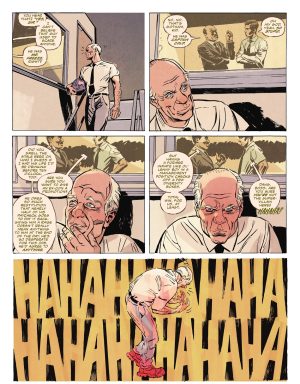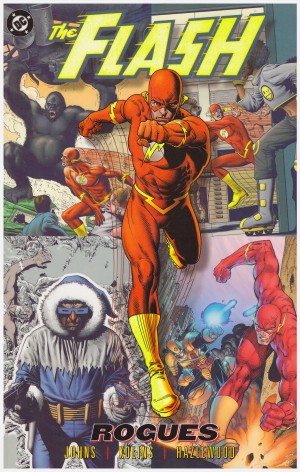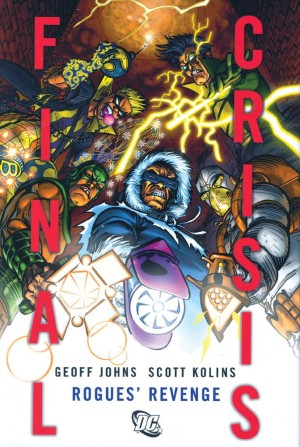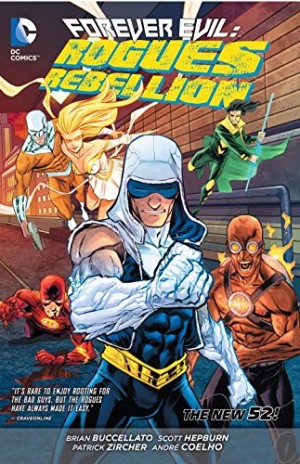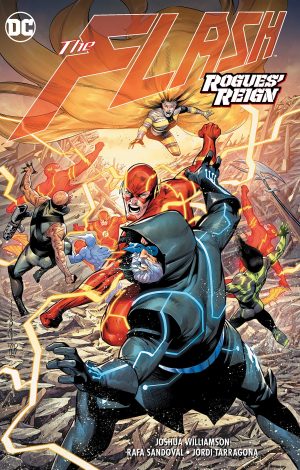Review by Frank Plowright
Rogues concerns the villains who trouble the Flash and his hometown of Central City, often united under that name. However, this takes place long after their glory days with an aged Len Snart, formerly Captain Cold, working in a factory, the sample art showing the point that sparks what had been a reformed and repentant parolee to plan one last big heist. The other Rogues who’ve not died don’t take a great deal of persuading to join him in raiding Gorilla Grodd’s African treasure trove in Gorilla City.
A greater than usual element of realism is applied to Joshua Williamson’s plot. Costumes are almost absent, and Snart’s most capable colleagues who’d make the task far simpler are either noted as dead (Weather Wizard) or effectively handicapped (Mirror Master). There’s no explanation for combat assassin Bronze Tiger now having a past with the other Rogues, the reality being his skills are required and no other Flash villain fits the role, but intriguingly Sam Simeon, known as part of DC obscurities Angel and the Ape, also features. In some respects his is the pivotal role. No longer a detective, he’s back in Gorilla City, and seeing as the Rogues are around there’s something he’d like done.
What’s already a good caper story is massively elevated by the stunning pages supplied by Italian artist Leomacs (Massimiliano Leonardo), like many from his country seemingly influenced by Joe Kubert. He supplies fully realised environments whether they’re the scuzzy trailer accommodation in which Snart begins Rogues, or a credibly futuristic Gorilla City. His people are naturalistically drawn without the exaggeration common to superhero comics as the presence of gorillas supplies plenty of that, and there’s considerable imagination applied to the page compositions. His one minor failing is maintaining a consistency of age, even allowing for Snart being rejuvenated by criminal activity. Adriano Turtulici and Luca Finelli contribute pages to the final chapter, also good artists technically, but their layouts are far more ordinary.
Caper plots tend to a follow a formula of everything going to plan until the spanner is thrown into the works, and Williamson doesn’t stray from that technique. His spanner is dropped during the final pages of the third chapter, and is a surprise readers won’t see coming while additionally providing insights into what some of the Rogues are really like. Williamson’s characterisation of Grodd, now ruler of his homeland, resembles the path Marvel writers have taken with the Kingpin, a man who’s a savage beast at heart desperate to overcome that, yet not entirely successful. The lapses, of course, provide deadly and shocking reminders. However, he’s eventually revealed as the plot’s weak spot when Williamson ignores the many times in the past that Grodd’s mental powers have controlled people when doing so would solve a situation instantly. It’s a convenience that niggles, the same as Bronze Tiger’s presence. Such moments recur in Williamson’s writing, and are so obvious they impair what’s otherwise very readable and stunningly drawn.
Does it end well? Well, one regular DC character’s pleased at the end.

